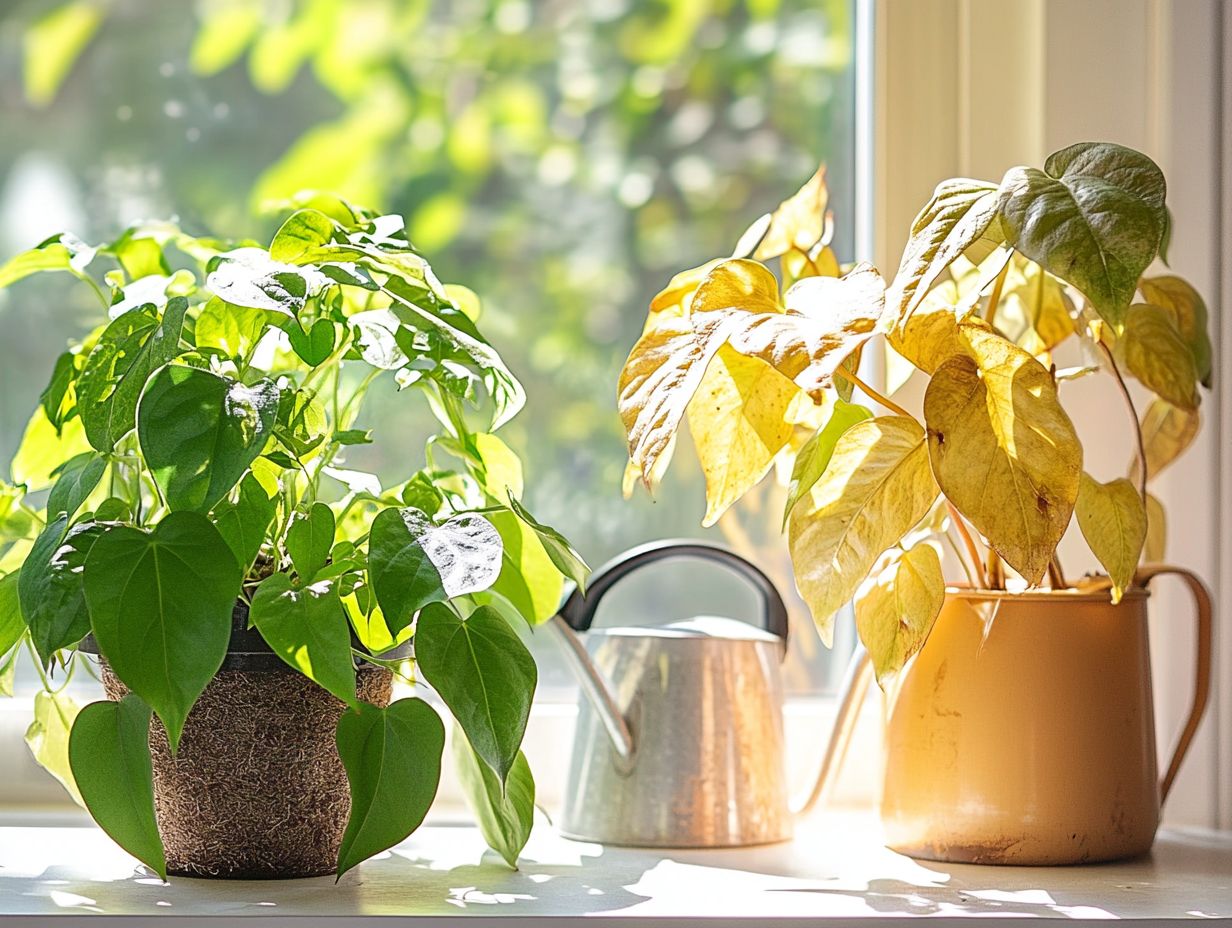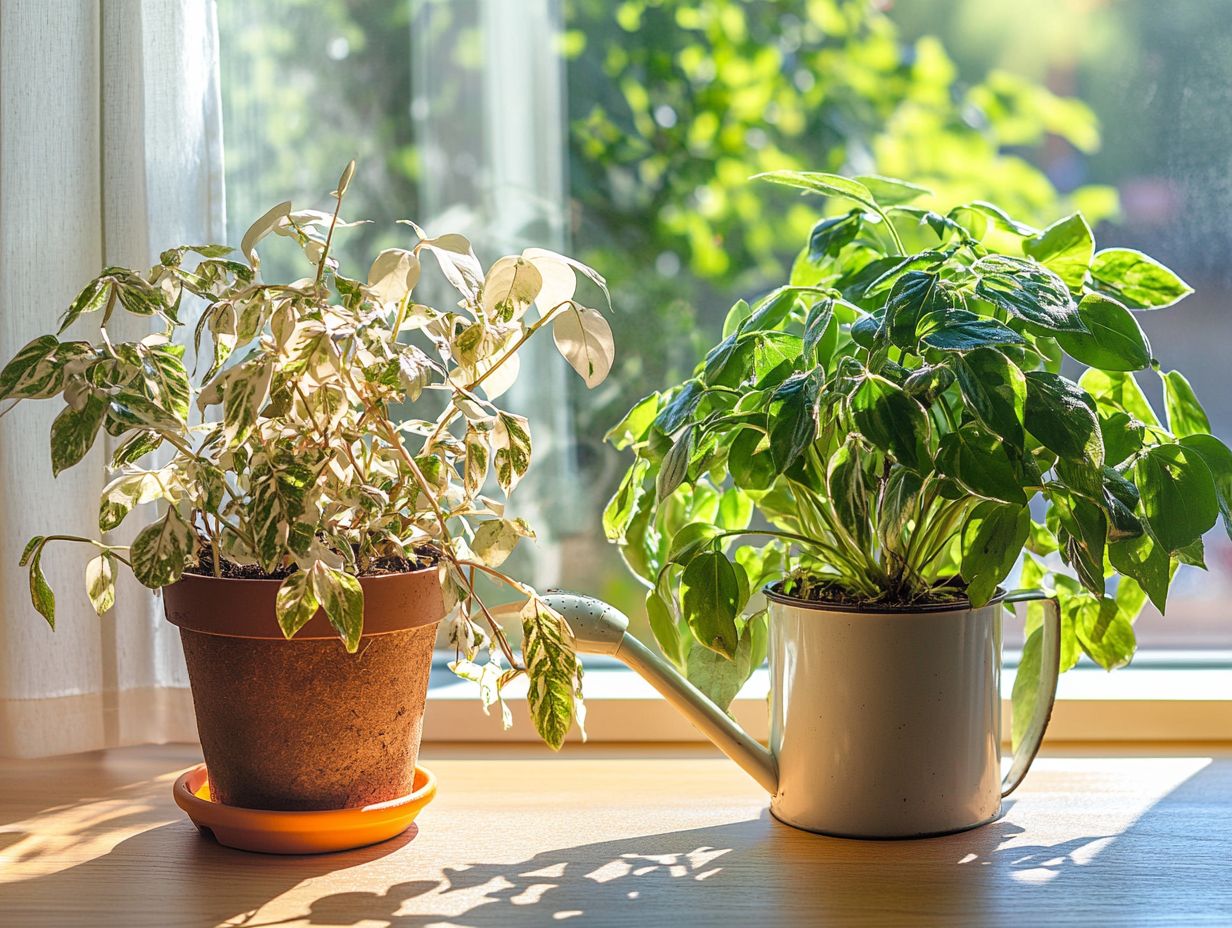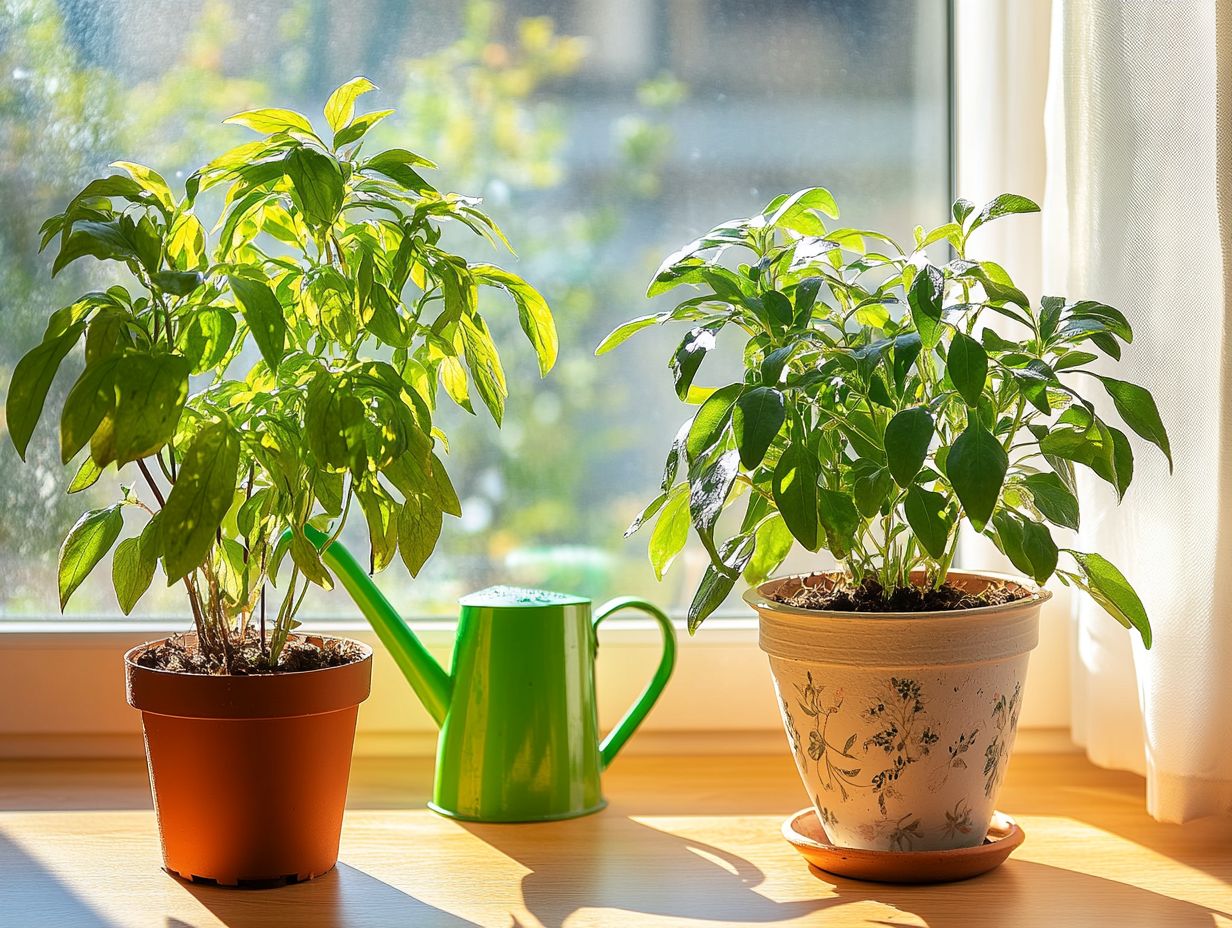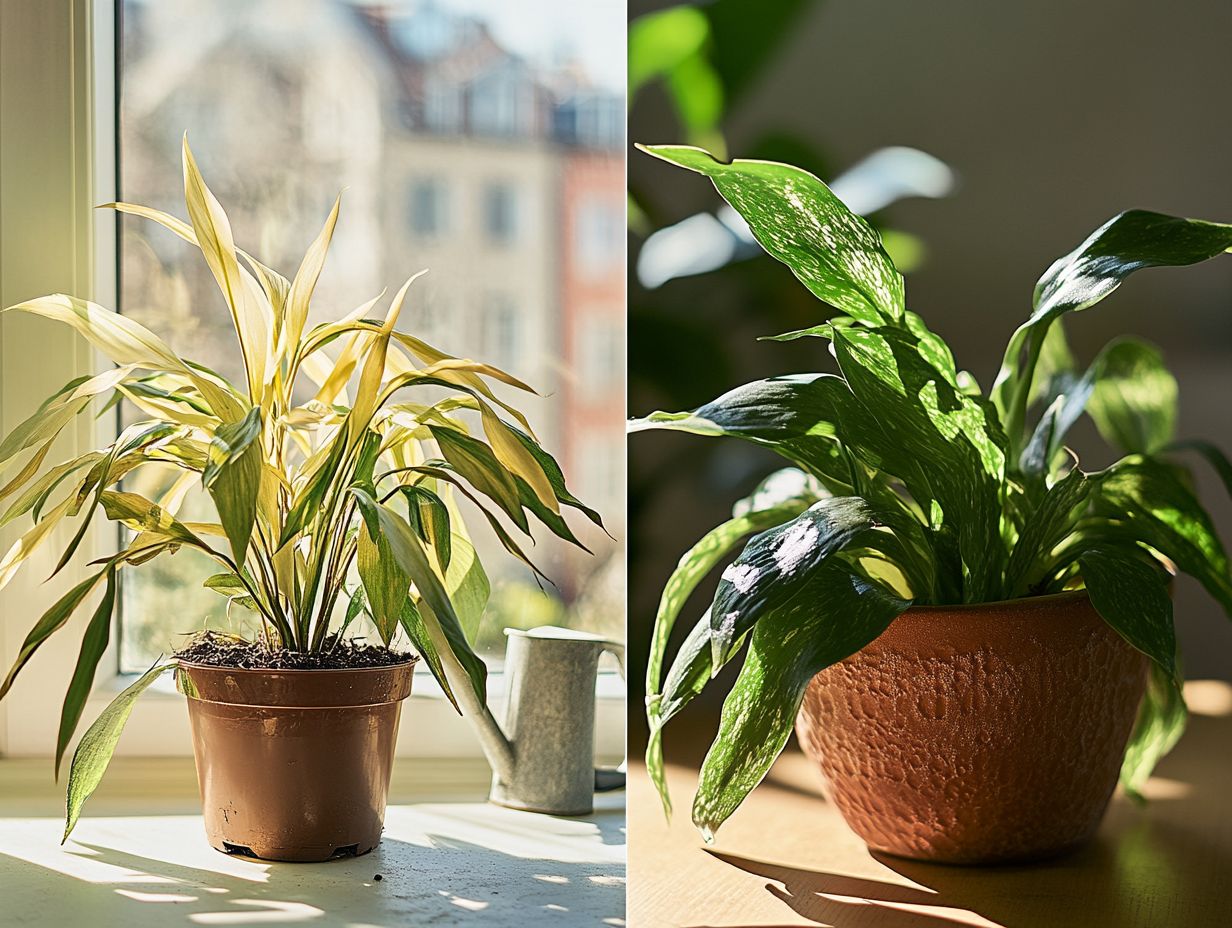The Greenest Cities to Visit in Europe
Keeping your indoor plants healthy is a rewarding journey, but it certainly comes with its unique challenges. Overwatering or underwaterwatering can create a range of issues, from wilting leaves to stunted growth that can leave any plant lover feeling frustrated.
In this article, you’ll discover five key signs that your plants need hydration, including dry soil and yellowing leaves. It delves into best practices for watering, highlights common pitfalls to avoid, and offers techniques to help your plants truly thrive.
Get ready to transform your plant care skills today!
Contents
- Essential Tips for Plant Care:
- 1. Wilting Leaves
- 2. Dry Soil
- 3. Yellowing Leaves
- 4. Stunted Growth
- 5. Brown Tips on Leaves
- How Often Should Indoor Plants Be Watered?
- Frequently Asked Questions
- 1. What are the top 5 signs that my indoor plants need watering?
- 2. How often should I water my indoor plants?
- 3. Can overwatering also cause problems for indoor plants?
- 4. How can I tell if my indoor plants are being overwatered?
- 5. Is it better to water indoor plants from the top or bottom?
- 6. Are there any other factors besides water that can affect the health of my indoor plants?
Essential Tips for Plant Care:

- Wilting leaves can be a sign that your indoor plants need water. Check the soil moisture before watering to avoid overwatering.
- Dry soil is a clear indicator that your indoor plants are thirsty. Water your plants thoroughly, and make sure the water drains properly.
- Yellowing leaves can signal a lack of water for your indoor plants. Increase the frequency of watering, but be careful not to overdo it.
1. Wilting Leaves
Wilting leaves can be a distressing sight in your houseplant garden, signaling potential issues like improper watering practices or unsuitable environmental conditions that impede your plants health and growth. Caring for houseplants indoors demands keen observation and a solid grasp of the factors influencing their well-being.
One of the most common culprits behind wilting is overwatering, which can lead to root rot—a detrimental condition where roots become waterlogged and lose their ability to absorb nutrients effectively. To identify signs of overwatering in houseplants, it’s important to monitor your watering habits. Environmental conditions also play a crucial role; for example, low humidity and insufficient light can stress your plants, making them more prone to wilting.
Using a moisture meter can provide invaluable insights into soil moisture levels, helping you ensure you only water when necessary. This approach prevents both under and overwatering. Additionally, be on the lookout for potential pests, such as spider mites; knowing the 5 signs of spider mites in indoor plants can help you protect your plants. By remaining attentive to these elements, you can cultivate healthier, more resilient indoor greenery that thrives in your care.
2. Dry Soil
Dry soil is a crucial sign that your indoor plants need immediate attention. Understanding the right watering frequency is vital for keeping your plants healthy and thriving. If you neglect to monitor the moisture levels in the soil, you could face a range of problems, including stunted growth in your beloved houseplants.
Each plant has its own unique needs. For example, succulents do well with infrequent watering because they can store moisture, while philodendrons prefer a more consistent hydration schedule. By establishing a personalized watering routine, you can easily meet the specific requirements of each plant. Additionally, being aware of 5 signs your plant needs pest attention can help you maintain their health.
Don’t forget to consider seasonal changes, as warmer months typically demand more frequent watering, while cooler periods may require less. Regularly checking the soil moisture levels is a straightforward yet effective practice that ensures your plants truly flourish. Additionally, being aware of the signs of nutrient deficiency in indoor plants can help you maintain their health.
3. Yellowing Leaves
Yellowing leaves on your indoor plants can be a telltale sign of underlying issues, such as nutrient deficiencies or improper watering habits. Addressing these concerns promptly is essential to ensure your plants continue to grow and thrive. By understanding what causes those yellowing leaves, you can implement effective care strategies to restore their health.
Overwatering, for instance, can lead to root rot, which affects nutrient uptake and results in the yellowing of the leaves. Nutrient imbalances, particularly a deficiency in essential elements like nitrogen or iron, can also manifest as discolored foliage. Using high-quality water, free from chlorine and other chemicals, can significantly enhance your plants’ well-being.
Ensure your pots have adequate drainage holes to prevent stagnant water and promote healthy root systems. When you consider all these factors, they work together to create an ideal environment for your indoor plants, reducing stress and enhancing their natural beauty.
We invite you to share your experiences and tips on indoor plant care to foster a community of enthusiastic plant parents!
4. Stunted Growth

Stunted growth in houseplants often stems from inadequate care. This includes improper watering, insufficient light, or unsuitable pot sizes that impede plant health.
Cacti thrive in well-draining soil and need less water. Avoid soggy conditions to prevent root rot.
The pot size is important. Larger pots provide more soil and nutrients, but a small plant in a big pot struggles to establish roots.
Proper lighting is also vital. Dracaena loves bright indirect light, while cacti prefer partial sunlight. By tailoring your care to these specific needs, you ll enjoy a burst of lush greenery that brightens your space!
5. Brown Tips on Leaves
Brown tips on leaves signal issues with humidity, watering, or environmental conditions. Recognizing these causes helps you maintain plant health.
Low humidity during winter causes moisture to evaporate, leading to brown tips. Inconsistent watering can stress your plants further.
To improve humidity, use a humidifier or group your plants together. Adjust your watering schedule to ensure consistent moisture without allowing standing water.
Self-watering planters are also effective for maintaining moisture, enriching the aesthetics and vitality of your indoor greenery.
How Often Should Indoor Plants Be Watered?
Understanding how often to water your plants is crucial. Each species has unique watering needs based on seasonal changes, pot size, and environment.
African violets enjoy moist soil but are prone to overwatering. Peace Lilies prefer dryness between waterings.
Use a moisture meter to check soil dampness before watering. This helps you create a flexible schedule tailored to each plant.
What Are the Best Ways to Water Indoor Plants?
The best ways to water your plants involve techniques that encourage healthy growth. Consider top or bottom watering and self-watering planters.
Room temperature water is gentler on plants and aids absorption. Self-watering planters provide continuous moisture but should be monitored to avoid stagnation.
Evaluate your plants needs and environmental conditions for the best results.
What Are the Common Mistakes in Watering Indoor Plants?

Common mistakes in watering indoor plants, such as overwatering and neglecting to adjust your watering frequency, can significantly harm plant health. This may lead to issues like root rot and stunted growth. Spotting these mistakes is key to a thriving indoor garden!
Overwatering often reveals itself through signs like yellowing leaves and wilting. This can be alarming for any plant enthusiast! To sidestep this issue, consider using a watering can with a spout for precise control. This ensures that water reaches the roots without inundating the plant. For more insights, avoid the top 7 mistakes in watering indoor plants.
Pay attention to environmental conditions such as temperature and humidity. This helps you determine the appropriate watering frequency. For instance, during hotter months, your plants may crave more hydration compared to the cooler seasons. Additionally, be aware of watering myths about indoor plants to avoid common mistakes. Keep an eye on these factors. This helps you create a balanced watering routine that nurtures the overall vitality of your indoor plants.
How Can One Prevent Overwatering Indoor Plants?
Preventing overwatering your indoor plants is essential for their health and vitality. Focus on effective strategies such as ensuring proper drainage holes, regularly checking soil moisture, and adjusting your watering habits accordingly. Recognizing the signs of overwatering gives you the power to take proactive measures to protect your plants.
Using a moisture meter can eliminate the guesswork from your watering routine. It provides a reliable gauge for when it’s time to hydrate. Before reaching for your watering can, assess the soil’s consistency. Additionally, be aware of the signs your plant needs more light. A simple test by feeling the soil’s texture can easily reveal whether it’s still damp or dry.
Different plants have unique water needs, so familiarizing yourself with these specific requirements is crucial. Selecting the right pots and soil will ensure optimal drainage and aeration, and knowing how to recognize the signs of overwatering will further enhance their overall vitality.
What Are the Different Types of Watering Techniques for Indoor Plants?
Different watering techniques for indoor plants can greatly influence their health and growth. Methods like top watering, bottom watering, and using rainwater each offer unique advantages. By understanding these techniques, you can select the best approach tailored to your plants’ specific needs.
Top watering means pouring water directly onto the soil for even distribution. However, it can sometimes lead to runoff, preventing water from reaching the roots effectively. On the flip side, bottom watering encourages roots to grow deeper as they seek out moisture, resulting in improved stability and growth.
Collecting rainwater is another excellent option! It not only provides your plants with beneficial nutrients but also reduces your dependence on tap water, which may contain unwanted chemicals. Additionally, recognizing stress signs in indoor plants is crucial to ensuring their health. Each of these methods affects soil moisture levels in distinct ways, creating optimal conditions for healthy plant growth and lush foliage.
What Are Some Signs of Overwatering Indoor Plants?
Recognizing the signs of overwatering your indoor plants is crucial for keeping them healthy. Look out for indicators like wilting leaves, yellowing foliage, and even the dreaded root rot these are your red flags! Act quickly to prevent further damage and help your plants thrive!
To troubleshoot these issues effectively, start by checking the soil’s moisture content. If it’s overly soggy, you’re likely creating conditions without oxygen, which can harm the roots. If you’re concerned about your plant’s health, learning how to tell if your plant is underwatered can provide valuable insights. Yellowing leaves signal that excess water is causing root rot, hampering the roots’ ability to absorb essential nutrients.
To restore your plants vitality, adjust your watering schedule. Allow the top inch of soil to dry out before the next watering. Consider enhancing drainage by repotting in soil that promotes better aeration. Using pots with drainage holes can significantly reduce the risk of overwatering, ensuring your plants receive moisture without drowning in it.
Frequently Asked Questions

1. What are the top 5 signs that my indoor plants need watering?
Watch for these signs: wilting leaves, dry soil, yellowing leaves, drooping stems, and a lack of growth. Recognizing them early is key to your plants’ health!
2. How often should I water my indoor plants?
Water once a week, but always check the soil moisture first. Remember, different plants have different needs!
3. Can overwatering also cause problems for indoor plants?
Yes! Overwatering can be just as harmful as underwatering. It can cause roots to decay, which could be fatal for your plants.
4. How can I tell if my indoor plants are being overwatered?
Look for wilting, yellowing, or drooping leaves. A musty smell from the soil is also a warning sign.
5. Is it better to water indoor plants from the top or bottom?
Top watering is usually best. It allows water to soak through the soil to the roots. However, some plants prefer bottom watering from a tray.
6. Are there any other factors besides water that can affect the health of my indoor plants?
Yes! Consider sunlight, humidity, and pests. Regularly check for these issues to keep your plants thriving!





